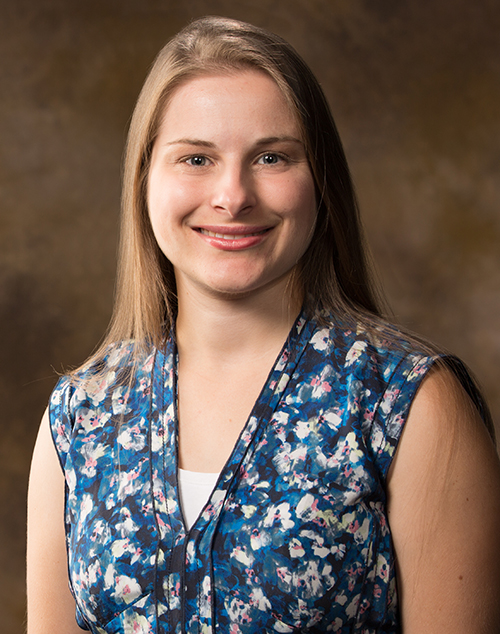
Kaitlin Gallagher knows what's trendy may not be always be the best thing for you.
Gallagher is an occupational biomechanist who joined the faculty of the University of Arkansas in 2015 as assistant professor of exercise science in the Department of Health, Human Performance and Recreation. That means she studies such ergonomic issues as posture, repetitive motion and muscle activity while people work.
She conducts research to examine the best ways to prevent pain and injury in the workplace. In recent years, standing desks that allow workers to stand up rather than sit all day at their computers have been popular. But, Gallagher said, research has shown that standing all day isn't the answer either as it can cause pain, too.
And, some people, such as assembly line workers or cashiers, may have no choice about standing while working.
"There was a big push in not sitting and the alternative was standing," Gallagher said. "There has definitely been a backlash because standing has also been shown to increase conditions such as varicose veins and increased pain. So, that's where we come in. We're going to test the effect of putting in walking breaks."
Gallagher recently received a $10,000 grant through the University of Texas Health Sciences to study whether taking a five-minute walking break every 25 minutes of work while standing will reduce back pain. Participants will come to the lab for two visits. One time, they will stand for a full two hours while working. The other time, they will take the walking breaks during the two hours of standing.
"We expect that changes in posture alleviate pain," she said.
Gallagher will measure muscle activity in the hips and backs of participants during the study period, followed by asking them questions about their pain level. She uses a scale asking them to rate their pain in their lower back and limbs from none to unimaginable. Participants will be between the ages of 18 and 35 to 40 and have reported no previous pain requiring a doctor's visit.
"We want a population that doesn't already have an injury or strategy for dealing with back pain," Gallagher said.
Individuals interested in participating can sign up online.
In addition to gathering data on whether light intensity physical activity breaks reduce back pain, the study will also look at whether prolonged standing affects the health of arteries. Matthew Ganio, associate professor of exercise science, will use ultrasound equipment to measure the arterial changes in participants.
"It's a better measure than taking a person's blood pressure," Ganio said.
He is looking for arterial stiffening because loss of elasticity is associated with an increase in cardiovascular disease.
"We know exercise in general is beneficial to cardiovascular health," Ganio said. "A study from the University of Missouri found that even fidgeting over long periods improved arterial health."
The funding to the University of Texas comes from the National Institute for Occupational Health and Safety. Implications from the research could be significant, particularly for blue-collar workers, Ganio said.
"If we see small changes in these trials when people take walks, we can possibly lower the risk of cardiovascular morbidity," he said.
The walking breaks will not require participants to change clothes or to work up a sweat, which would add to the time away from work responsibilities. It's also possible employees can take phone calls while walking or have walking meetings with co-workers, she said.
Future studies would need to be done to determine the exact proportions of walking mixed with standing or sitting that would be most beneficial to workers. Exercise has also been shown to increase worker productivity because it fosters cognitive activity, or improved thinking skills, Ganio said.
At the same time, walking is more demanding on the central nervous system than standing, which is more demanding on the body than sitting, Gallagher said.
"First, we'll see if this works," she said of the walking breaks' potential to alleviate pain, "then we will answer questions about productivity."
Contacts
Heidi S. Wells, director of communications
College of Education and Health Professions
479-575-3138, heidisw@uark.edu